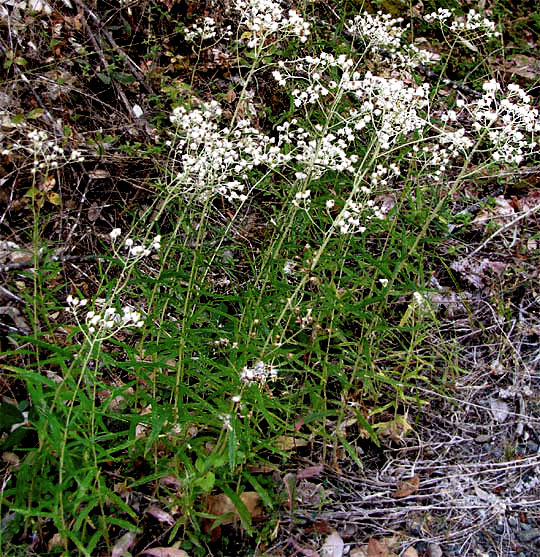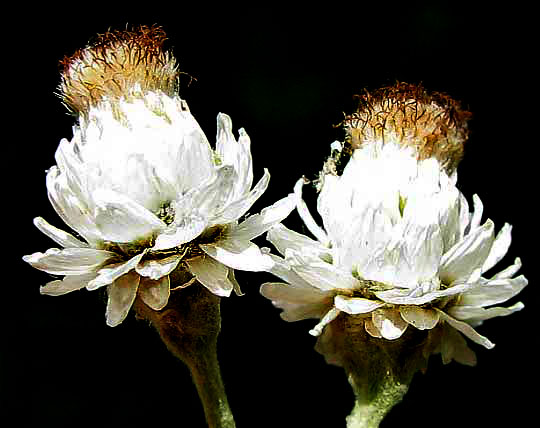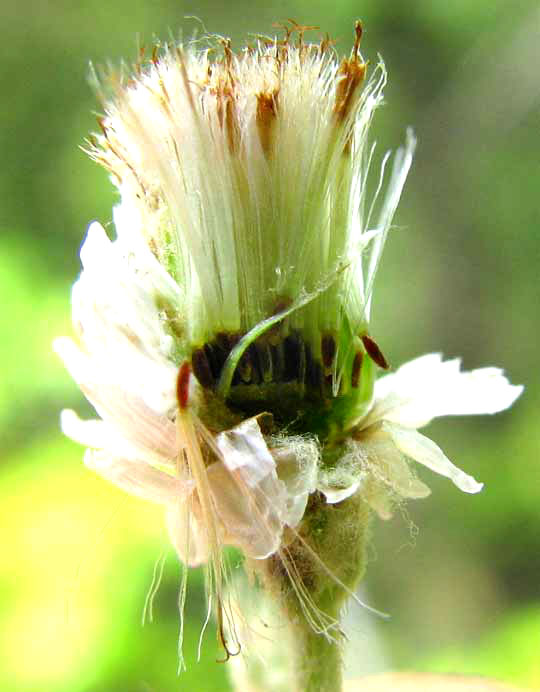Excerpts from Jim Conrad's
Naturalist Newsletter
from the September 20, 2009 Newsletter, issued from the Siskiyou Mountains west of Grants Pass, Oregon:
PEARLY EVERLASTING
Few wildflowers are blossoming nowadays but one fairly common one along mountain roads has been maintaining its flowers for the last month or so. It's the Pearly Everlasting, ANAPHALIS MARGARITACEA, shown below:

It's a member of the Composite or Sunflower Family, so the white items are composite flower heads, as shown below:

A cross section showing individual slender flowers atop their dark, parachute-topped, achene-fruits is shown below:

One unusual feature of the plant is that the undersurfaces of its narrow leaves are wooly with soft, white hairs, and the picture shows yet another uniqueness: The base of each flower head bristles with white bracts (modified leaves). Other composite flower heads have bracts but very few bracts are as widely- flaring and conspicuous as these. Since the bracts (technically known as involucral bracts or phallaries) are somewhat dry, as are the stiff stems, the species often is grown for making dried floral arrangements.
Indigenous Americans used the plant medicinally, taking it internally for diarrhea, dysentery and pulmonary problems, and as a poultice applied to burns, sores, ulcers, bruises, swellings and rheumatic joints. Steam from the plant being boiled was inhaled for headaches, and a cooled infusion of the roots has been used as a laxative and emetic to treat "poison stomach." Pearly Everlasting is fairly closely related to Cudweed, the "Gordo Lobo" I have written about from Mexico, where it is highly regarded for treatment of lung problems. My Gordo Lobo page is at http://www.backyardnature.net/chiapas/cudweed.htm.
Pearly Everlastings (other kinds of plants bear that common name as well so use the Latin to be sure) are common and native throughout North America except in US states bordering the Gulf of Mexico. The species also is native to Asia and has been introduced into Europe, so this is a very wide-ranging plant, one good to know.